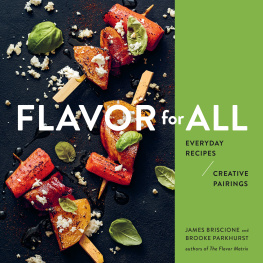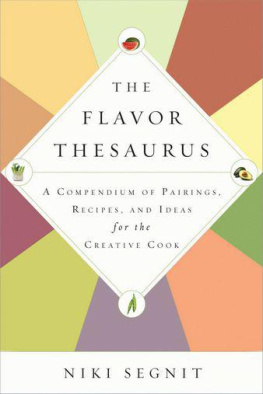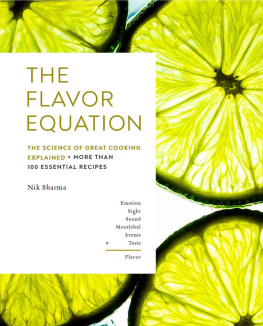Contents



To our babies, Parker Lee and August, and your big appetites! This is for you.
Love, Mom and Dad
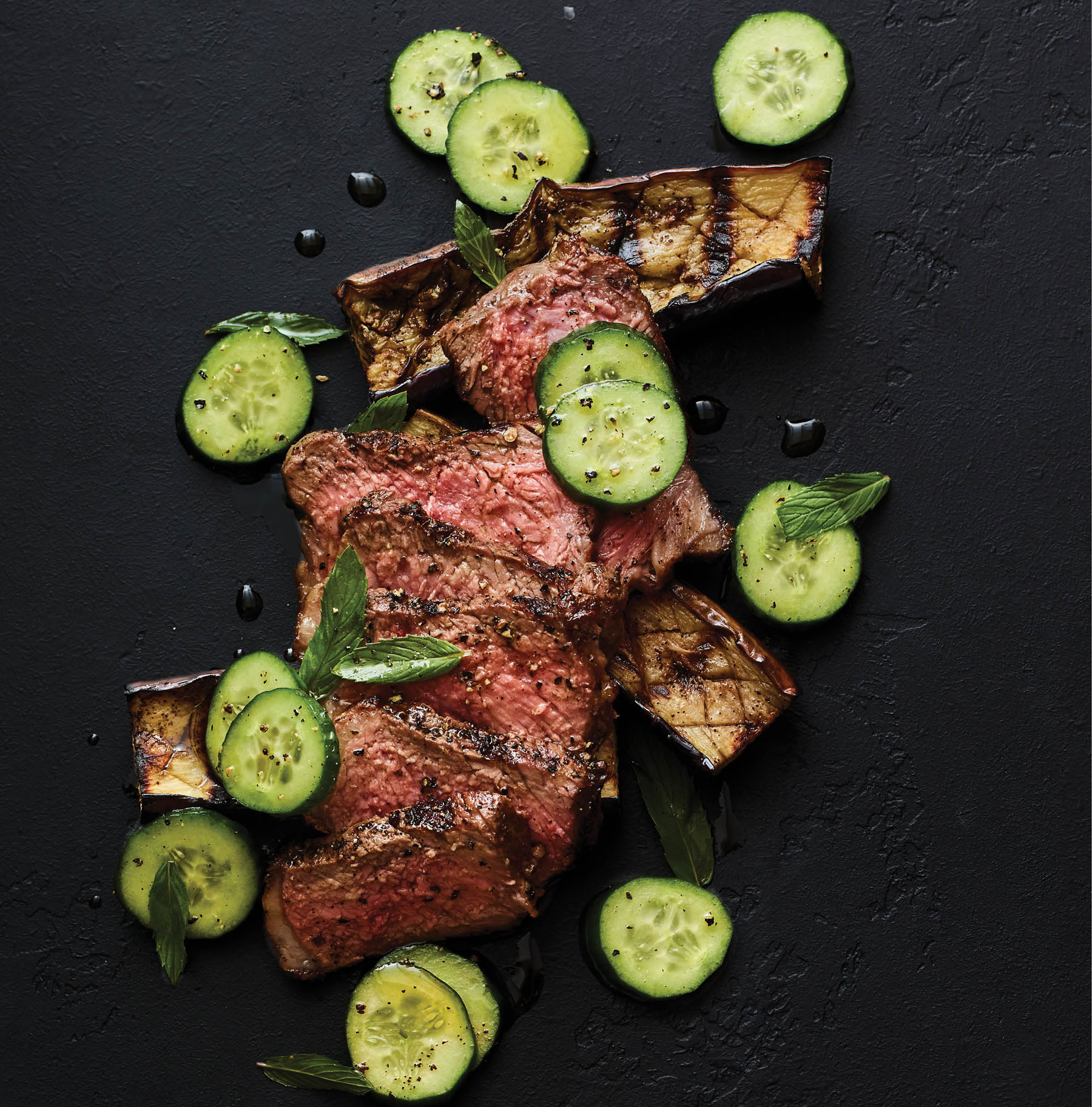
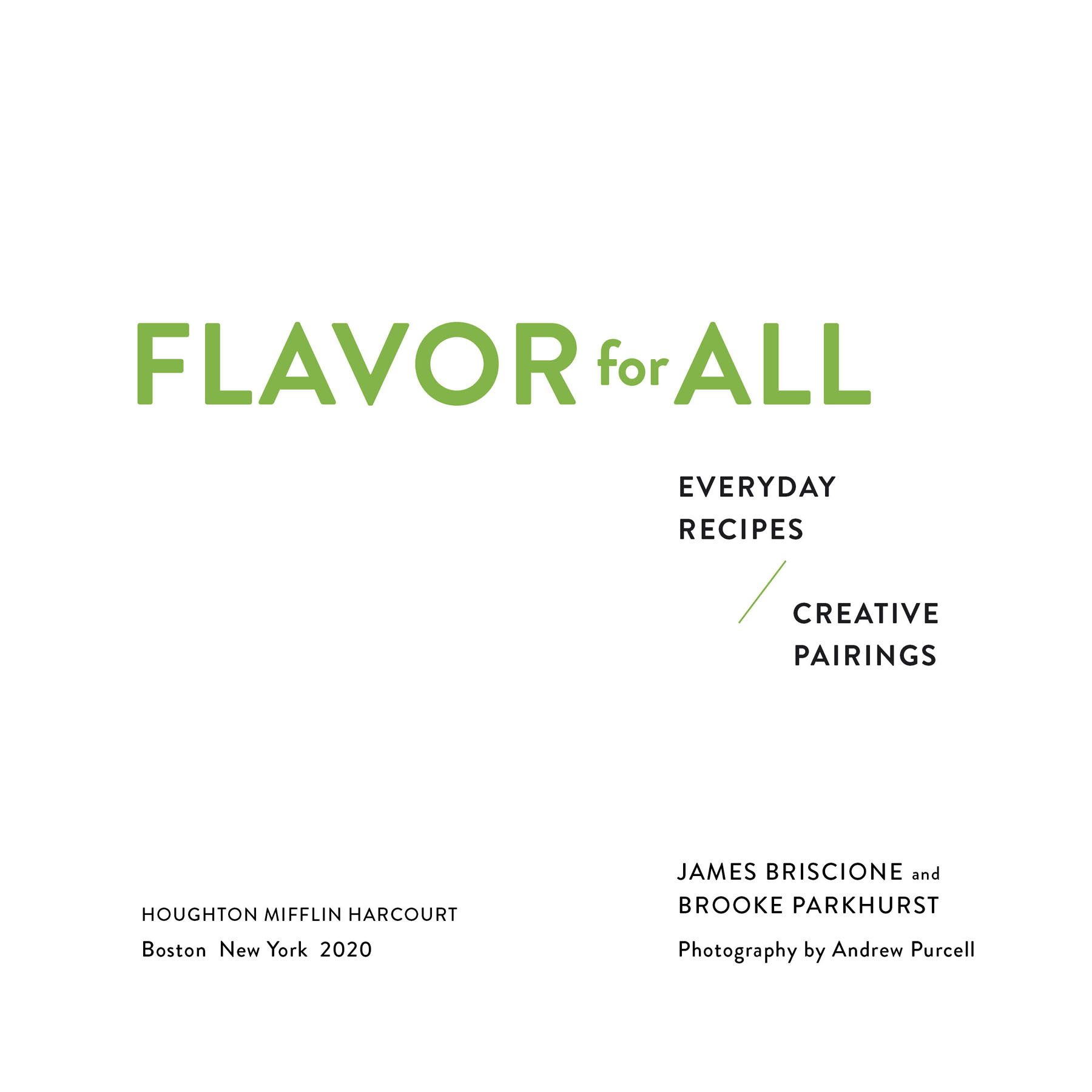
contents
Copyright 2020 by James Briscione and Brooke Parkhurst
Photographs 2020 by Andrew Purcell
Author photographs on pages 2020 by Steven Gray
Illustration on by Allison Meierding
All rights reserved
For information about permission to reproduce selections from this book, write to or to Permissions, Houghton Mifflin Harcourt Publishing Company, 3 Park Avenue, 19th Floor, New York, New York 10016.
hmhbooks.com
Library of Congress Cataloging-in-Publication Data
Names: Briscione, James, 1980 author. | Parkhurst, Brooke, author. | Purcell, Andrew, 1978 photographer.
Title: Flavor for all : everyday recipes and creative pairings / James Briscione and Brooke Parkhurst ; photography by Andrew Purcell.
Description: Boston : Houghton Mifflin Harcourt, 2020. | Includes index. | Summary: Simple, dynamic, flavor-packed recipes from the authors of The Flavor Matrixinformed by the science of flavor pairing but accessible enough for every cook Provided by publisher.
Identifiers: LCCN 2020016339 (print) | LCCN 2020016340 (ebook) | ISBN 9780358164067 (hardback) | ISBN 9780358164029 (ebook)
Subjects: LCSH: Cooking. | FoodComposition. | Flavor. | LCGFT: Cookbooks.
Classification: LCC TX714 .B75336 2020 (print) | LCC TX714 (ebook) | DDC 641.5dc23
LC record available at https://lccn.loc.gov/2020016339
LC ebook record available at https://lccn.loc.gov/2020016340
Book and cover design by Kara Plikaitis
Food styling by Carrie Purcell
v1.1020

Introduction
For both of us, sharing our previous book, The Flavor Matrix, was an incredible journey. James created an exceptional reference book that is recognized as much for its innovation as for its thought-provoking graphics. In it, he distilled the complex chemistry of flavor and gave everyone a lesson in food pairing. We were surprised and excited by the diversity of readers drawn to the book: food geeks, culinary students, dialed-in soccer moms, mixologists, and weekend warriors. No matter their background, they often asked us the same question: How do you cook at home?
That oft-repeated question inspired us to write this book, an index of no-fail, kick-ass, chemistry-enabled recipes for everyday cooking.
While we are always thinking about how flavors and pairings can make every meal as delicious as possible, the reality is, were busy. We have a new restaurant. We have two young children at home. We have around one hour at the end of the day to make something tasty for dinner. That means that every dish on our table cannot be a deeply researched masterpiece. The flavor matrixes are always in our heads, but we also have a cheat sheet of greatest hits.
Sometimes a subtle twist on a classic or a gentle pop of unexpected flavor is enough. The recipes in Flavor for All reflect our simple, thoughtful, flavor-focused approach to home cooking. Theyre deeply delicious, yet easy; unexpected, but still familiar. Dishes such as .
And we never ignore the classics. The Flavor Matrix revealed why some of our favorite flavor combinationsthink cheese pizza, or pork chops and applesaucework so well together. Margherita pizza contains the compound 4-methylpentanoic acid, a chemical commonality among cheese, tomato sauce, and baked wheat that serves to enhance the flavor of all three when combined. In the pairing of pork and apples, 2-acteylfuran is one of the compounds that links this classic combination together. You always knew that these dishes tasted great, and The Flavor Matrix helps you understand why.
Flavor for All, in turn, builds on the science behind some of these classic combinations and fine tunes the techniques and ingredients to create more than 100 epic recipes.
For example, as a variation on the aforementioned pork and apple pairing, weve included a recipe for . The compound we mentioned, 2-acetylfuran, is not only found in pork and apples but is also prevalent in bourbon and alliums. This recipe kicks off with a simple brine made from items you already have in your fridge or pantryapple juice, soy sauce, and mustardso you can mix it up before work or school and be ready to cook the juiciest, most flavorful pork youve ever tasted as soon as you get home.
Flavor for All is a book about how we liveto eat! We are working parents first, food- and wine-obsessed innovators second. We want this book to be functional, fun, and indispensable. The breakdown of the book is just like us: simple and focused on the food. We begin with a brief introduction to review the concept of flavor pairing and to set the scene for the recipes to come.
Next, we originally wanted to create a section of the book that would act as a culinary cheat sheetsomething that could help new and experienced cooks alike understand how to build maximum flavor into every single dish they prepare. This next-level approach is something James has taught to cooks around the world through his role as the director of culinary research at the Institute of Culinary Education and now as a Food Network personality. Whether its about how proteins react to salt, the right way to boil an egg, or the proper technique behind a perfect bowl of spaghetti, this insider knowledge will make everyone a more confident and capable cook. Then we decided not to do that.
Instead, we took those nuggets of culinary wisdom gained over a lifetime in the kitchen and put them where they would be most useful: in the recipes themselves. All of our best-loved cookbooks are full of handwritten notes in the marginshelpful reminders, or brief explanations of why something is done a specific way. We love those little margin notes, so we decided to go ahead and create them for youright there in the margins as if you had written them yourself. Its our way of saying, Hey, heres something you should know about this recipe without interrupting the cooking process. These notes range from the science behind what is happening in a particular step of the recipe to gentle reminders about basic technique.
Beyond the science of cooking, we also wanted to pull the curtain back on the theory of taste development. Creating balance with acidity, spice, umami, and the other elements of taste makes for the most delicious dishes. Within each recipe, the ingredients that directly contribute each of these tastes are annotated. We believe this will help you understand what each ingredient brings to a dish and therefore encourage you to experiment. For example, if a recipe calls for soy sauce ( SALT, UMAMI ) but last nights takeout sushi bender left your bottle empty, you know that you can deliver those same tastes to the recipe with any of the following: fish sauce, Worcestershire sauce, parmesan cheese, tomato paste, mushrooms, seaweed, or prosciutto.

